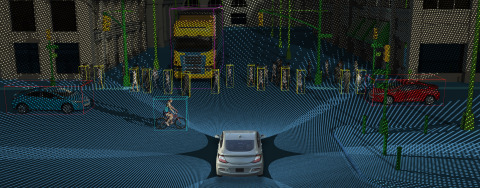Perception solution developer AEye announced that eight patents related to its perception system iDAR (Intelligent Detection and Ranging) have been confirmed. AEye’s iDAR is an integrated system combining solid-state MEMs-based agile LiDAR, fused HD camera, and software definable AI technology.
With the aim to solve the challenges of robotic vision for autonomous vehicles, AEye developed iDAR, the artificial perception system that combines LiDAR, HD camera and AI intelligence to create a smart perception sensor that mimic human visual cortex for environment evaluation. The company was awarded three patents with the system in March 2018 and eight additional patents recently.

(Image: AEye)
Six of the new patents relate to iDAR’s ability to enable software-defined frames and dynamic scan patterns. iDAR eliminates the constraints of the typical static point cloud by introducing dynamic scan modes designed to improve information acuity and minimize latency. With iDAR, scan modes can be combined and their data aggregated, enabling an AEye iDAR-powered device to be configured according to situational demands, such as when a vehicle moving at speed encounters congestion. This results in improved perception and time-to-reaction, while significantly reducing resource overhead.
Two of AEye’s recent patents focus on how the iDAR platform monitors and manages the laser energy of its agile LiDAR. iDAR deploys adaptive energy control on a pulse-by-pulse basis, allowing the system to automatically adjust the energy, tuning and shaping of each laser pulse. This architecture allows the dynamic adjustment of scan patterns and the ability to adapt the laser energy for each pulse, enabling complete interference mitigation, eye safety and retro mitigation.
AEye has strategically cooperated with several partners including receiving investments from SUBARU, LG Electronics, Hella and SK Hynix. In addition, The company revealed in January that it is working with LG and Hella in the development of autonomous driving perception solutions.












